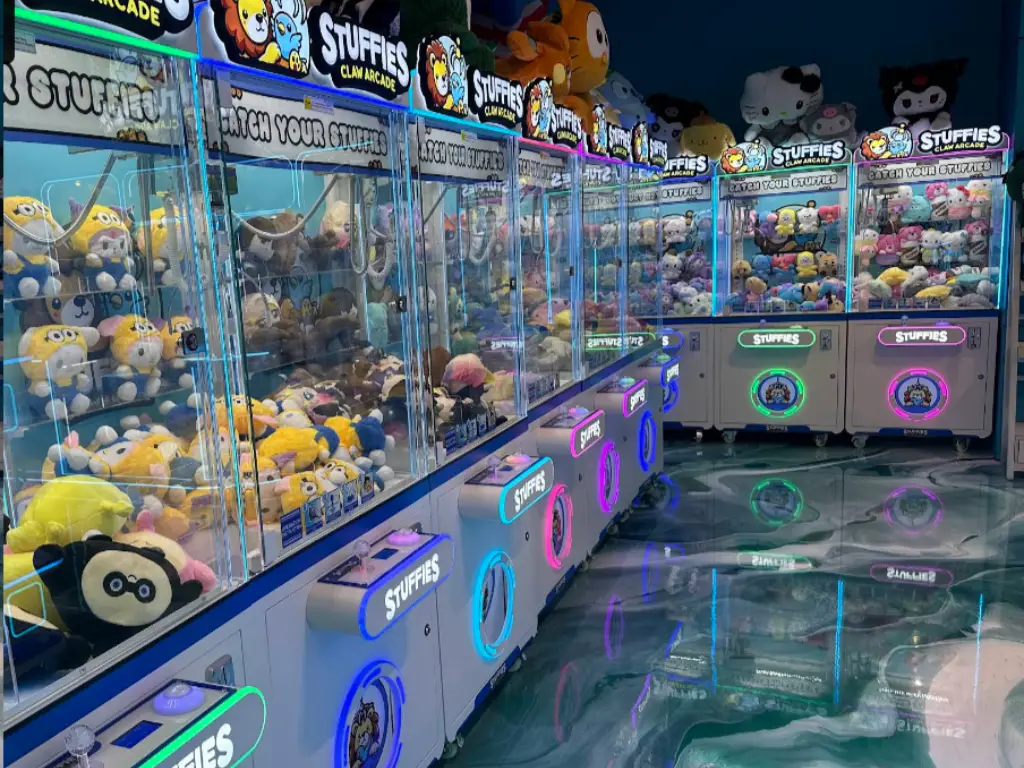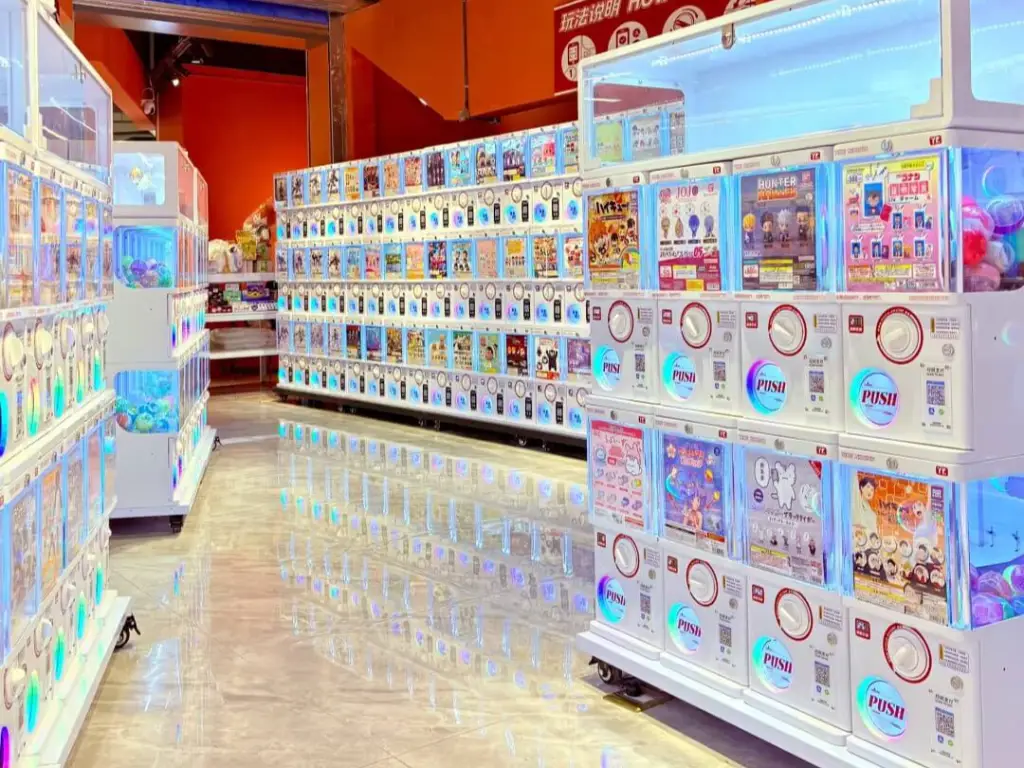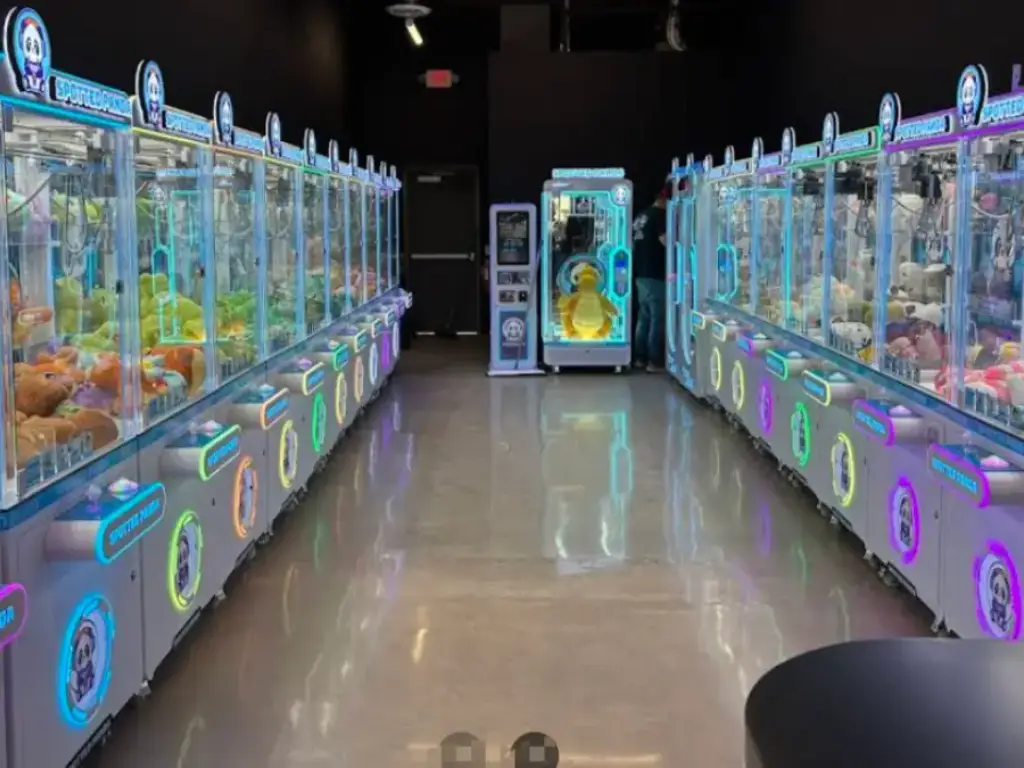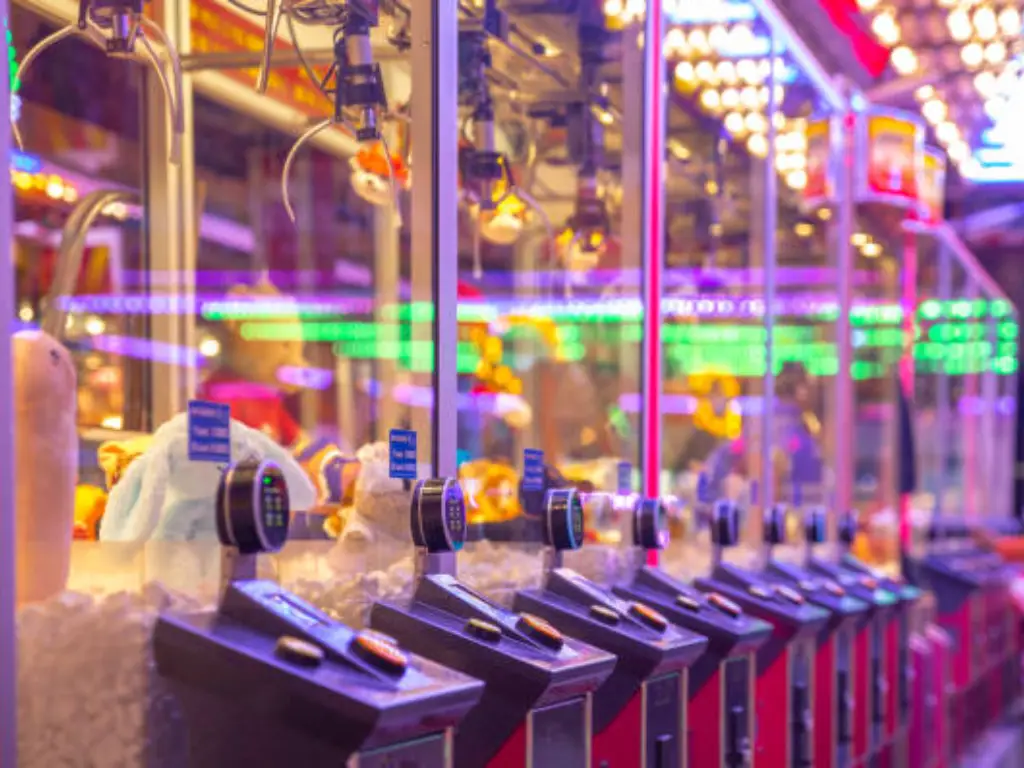Mesin cakar, juga dikenal sebagai permainan derek, adalah bahan pokok arcade yang ikonik. Mereka mencolok, seru, dan seringkali membuat frustrasi. Tapi pernahkah Anda bertanya-tanya – seberapa sering mesin cakar benar-benar membayar? Apakah ada polanya, atau apakah semuanya benar-benar acak? Mari kita uraikan dengan data, wawasan ahli, dan beberapa tip orang dalam untuk membantu Anda memahami peluang sebenarnya.
Tingkat Pembayaran Mesin Cakar: Yang Perlu Anda Ketahui
Itu tingkat pembayaran dari mesin cakar mengacu pada seberapa sering mesin tersebut memungkinkan pemain memenangkan hadiah. Kebanyakan mesin modern dirancang dengan algoritma internal yang mengontrol kapan cakar cukup kuat untuk mengambil dan menahan hadiah.
🎯 Tarif Pembayaran Biasa:
- Kisaran rata-rata: 10%–30% (yaitu, 1 di dalam 10 ke 1 di dalam 3 diputar)
- Mesin kelas atas: 15%–35%, tergantung pada pengaturan operator
- Mesin hadiah mewah: Seringkali disetel ke hanya 5%–10%
Operator dapat mengonfigurasi persentase pembayaran ini untuk menyeimbangkan kepuasan pemain dengan margin keuntungan.
Tingkat pembayaran dapat bervariasi secara signifikan antara jaringan arcade yang berbeda dan bahkan lokasi individu. Beberapa operator mungkin menyesuaikan tarif berdasarkan lalu lintas pejalan kaki, acara khusus, atau faktor musiman. Selain itu, mesin yang lebih baru sering kali memiliki pemrograman yang lebih canggih yang dapat menyesuaikan tingkat pembayaran secara dinamis berdasarkan pola permainan terkini.
Kalkulator Peluang Mesin Cakar
Pengaturan Mesin
📈 Peluang Kemenangan Anda
💰 Analisis Biaya
🏆 Hasil Simulasi
💡 Pro Tips
- • Sebagian besar mesin cakar arcade memiliki tingkat pembayaran antara 3-7%
- • Hadiah yang bernilai lebih tinggi biasanya memiliki tingkat pembayaran yang lebih rendah
- • Pusat hiburan keluarga sering kali mempunyai tempat yang lebih luas
- • Perhatikan pemain lain terlebih dahulu untuk mengukur aktivitas mesin terkini
- • Pertimbangkan nilai hiburannya, bukan hanya potensi hadiahnya
Apakah Mesin Cakar Dicurangi?
Jawaban singkatnya adalah ya – mesin cakar memang demikian diprogram untuk membatasi kapan hadiah dapat dimenangkan. Ini tidak ilegal, tapi ini adalah taktik bisnis untuk mengelola keuntungan.
Bagaimana Sistem Sebenarnya Bekerja:
Mesin cakar menggunakan sistem pegangan ganda yang dikendalikan oleh perangkat lunak internal. Selama sebagian besar drama, cakar beroperasi dengan kekuatan cengkeraman yang sengaja lemah – hanya cukup untuk mengambil item tetapi tidak cukup kuat untuk menahannya dengan aman selama pengangkutan ke saluran hadiah. Ini disebut “mode cakar lemah.”
Namun, ketika mesin mencapai titik pembayaran yang telah ditentukan, itu beralih ke “mode cakar yang kuat,” dimana kekuatan cengkeraman meningkat secara dramatis. Dalam mode ini, cakar tersebut berhasil mengambil dan mengangkut hadiah dengan keandalan yang jauh lebih tinggi.
Aspek Hukum dan Peraturan:
Sistem ini sepenuhnya legal di sebagian besar yurisdiksi karena mesin cakar diklasifikasikan sebagai “permainan keterampilan dengan unsur peluang” daripada perangkat perjudian murni. Operator biasanya harus menampilkan informasi peluang atau pembayaran, meskipun hal ini sering kali dalam bentuk cetakan kecil atau dokumentasi teknis daripada diposting secara jelas.
Apa Artinya Bagi Pemain:
Sementara mesin melakukan kontrol ketika kemenangan dimungkinkan, keterampilan masih memainkan peran penting. Bahkan selama mode pembayaran, posisi yang buruk, waktu, atau pemilihan hadiah dapat mengakibatkan upaya yang gagal. Sebaliknya, skill luar biasa terkadang bisa mengatasi pengaturan cakar yang lemah, terutama dengan hadiah yang lebih ringan atau posisi yang menguntungkan.
Bagaimana Mengenalinya Jika Mesin Cakar Siap Membayar
Meskipun Anda tidak bisa mengetahui secara pasti, beberapa indikator dapat membantu Anda mengambil keputusan yang lebih strategis tentang kapan harus bermain.
Amati Pemain Lain:
Metode yang paling dapat diandalkan adalah mengawasi mesin 10-15 menit sebelum bermain. Pantau berapa banyak upaya gagal berturut-turut yang Anda saksikan. Jika Anda melihat 15-20 permainan yang gagal berturut-turut, mesin mungkin mendekati jendela pembayarannya. Carilah pola seperti hadiah diambil tetapi dijatuhkan sebelum mencapai saluran – ini sering kali menunjukkan mode cakar yang lemah.
Periksa Pengaturan Hadiah:
Mesin yang siap membayar sering kali memiliki hadiah yang sengaja diposisikan agar lebih mudah diambil. Terkadang operator “tumpukan” atau mengatur hadiah di posisi yang lebih mudah diakses setelah restocking, terutama jika mereka mengetahui mesin tersebut akan segera menerima pembayaran. Carilah barang-barang yang tampaknya ditempatkan dengan sangat baik atau hadiah-hadiah yang terletak di dekat tepi tumpukan.
Uji Kekuatan Cakar:
Jika Anda memutuskan untuk bermain, perhatikan kekuatan cengkeraman cakar pada percobaan pertama Anda. Cakar kuat yang mencengkeram item dengan kuat tetapi masih gagal mungkin menunjukkan bahwa Anda hampir mencapai mode pembayaran. Sebaliknya, cakar yang sepertinya hampir tidak bisa menutup atau segera melepaskan item kemungkinan besar dalam mode lemah.
Pola Berbasis Waktu:
Beberapa operator menyesuaikan alat berat pada jam-jam tertentu. Mesin lebih cenderung berada dalam mode pembayaran selama jam sibuk (malam hari, akhir pekan) ketika lebih banyak pemain hadir untuk menyaksikan kemenangan, menciptakan kegembiraan dan menarik pemain tambahan. Sesi pagi atau larut malam mungkin menemukan mesin dalam siklus pembayaran yang lebih ketat.
Carilah Pemenang Terbaru:
Periksa apakah ada hadiah baru di saluran hadiah atau tanyakan kepada staf kapan mesin terakhir dimenangkan. Jika sudah beberapa jam atau seharian penuh tanpa kemenangan yang berarti, kemungkinannya mungkin menguntungkan Anda.
Indikator Perawatan Mesin:
Mesin yang baru diisi ulang dengan hadiah yang tersusun rapi mungkin akan dibayar lebih cepat untuk menghasilkan bunga awal. Sebaliknya, mesin dengan pengaturan hadiah yang acak-acakan mungkin baru saja membayar dan mengatur ulang ke siklus baru.
Dengarkan Mekanismenya:
Pemain berpengalaman sering kali melaporkan bahwa cakar dalam mode pembayaran terdengar sedikit berbeda – motor mungkin berjalan lebih bertenaga, atau mekanisme penutupan mungkin menghasilkan suara yang lebih tegas. Meskipun halus, isyarat audio ini terkadang menunjukkan pengaturan cakar yang lebih kuat.
Ingatlah bahwa ini adalah indikator, bukan jaminan. Mesin cakar melibatkan elemen terprogram dan komponen keterampilan asli, jadi kesuksesan pada akhirnya bergantung pada kombinasi waktu yang cerdas dan teknik yang baik.
Faktor-Faktor yang Mempengaruhi Tingkat Kemenangan Mesin Cakar
🧩 Mekanisme cakar
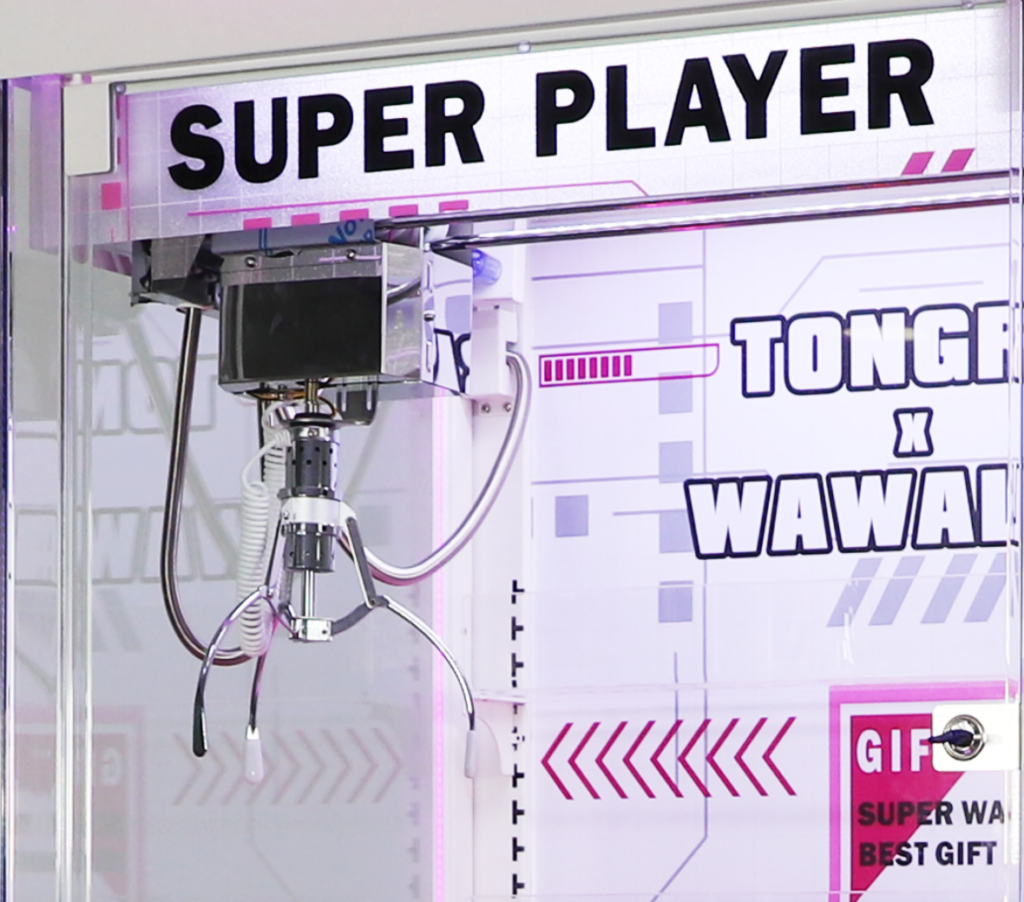
Desain mekanis cakarnya adalah fondasi dan inti dari mesin cakar. Setiap detail penting—bentuknya, ukuran, dan bahan cakarnya, serta area kontaknya dengan hadiah, secara langsung mempengaruhi stabilitasnya selama perebutan.
Misalnya, cakar dengan tepi yang terlalu halus bisa tergelincir saat menyentuh hadiah, mengarah pada kegagalan. Demikian pula, tegangan pegas internal dan sudut bukaan cakar sangat penting. Parameter ini menentukan apakah cakar dapat menutup sekitar hadiah dengan aman dan mempertahankan cengkeraman yang cukup saat mengangkat. Selain itu, presisi dan stabilitas sistem transmisi internal alat berat memainkan peran penting. Hubungi Anda Produsen Mesin Claw jika anda membutuhkan informasi detail.
🔨 Desain Algoritma
Probabilitas pembayaran mesin cakar sangat dipengaruhi oleh pemrograman algoritmik. Mesin cakar modern mengandalkan sistem kontrol elektronik untuk secara dinamis menyesuaikan kekuatan genggaman dan kecepatan gerakan melalui algoritma perangkat lunak.
Algoritme ini mempertimbangkan variabel seperti waktu bermain, sejumlah percobaan, dan uang yang dikeluarkan untuk mengendalikan kesulitan permainan dan menyeimbangkan profitabilitas bagi operator. Misalnya, beberapa mesin cakar mungkin memiliki tingkat keberhasilan pengambilan yang lebih tinggi selama upaya awal untuk mendorong permainan yang berkelanjutan. Namun, seiring dengan meningkatnya upaya, tingkat keberhasilan secara bertahap menurun untuk memastikan operator mempertahankan profitabilitas. Ini “kesulitan progresif” desain menciptakan perpaduan kegembiraan, tantangan, dan ketidakpastian bagi pemain.
🏱 Penempatan Hadiah
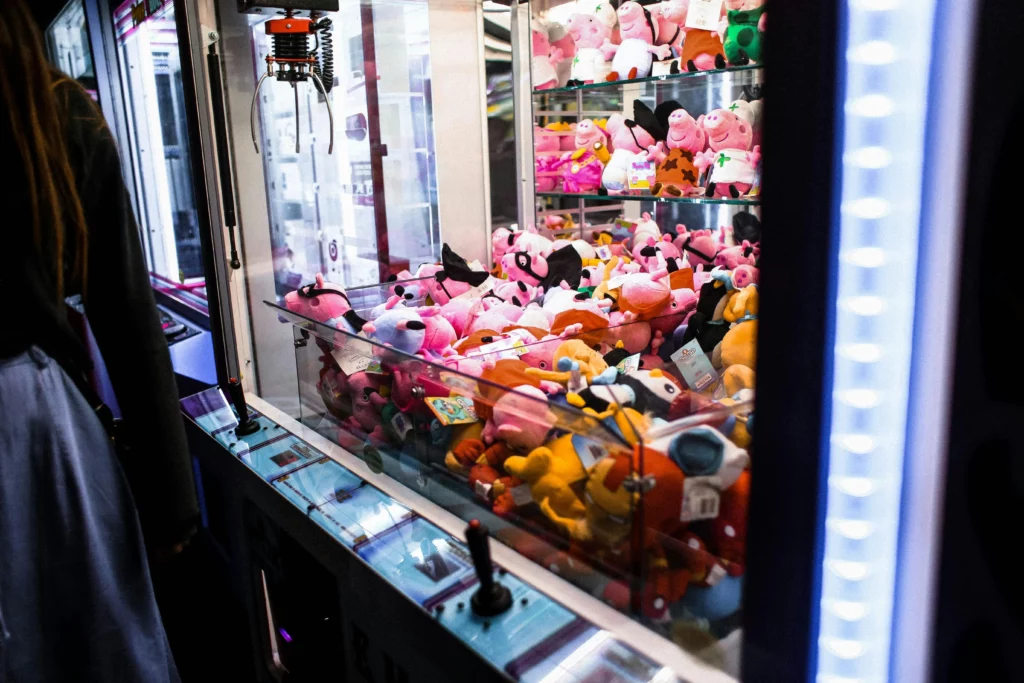
Pengaturan hadiah adalah faktor penting lainnya dalam gameplay mesin cakar. Operator berpengalaman secara strategis memposisikan hadiah berdasarkan bentuknya, berat, dan popularitas.
Beberapa hadiah sengaja ditempatkan di sudut yang sulit dijangkau atau dikelilingi rintangan, meningkatkan kesulitan untuk meraihnya. Selain itu, hadiah yang ditumpuk rapat mungkin menyisakan sedikit celah, membuat cakar lebih sulit mencengkeram sasaran. Sebaliknya, memberi jarak pada hadiah atau mengaturnya dalam tingkatan dapat secara halus meningkatkan peluang keberhasilan, berfungsi sebagai dorongan tersembunyi bagi para pemain.
🕹️ Teknik Pemain
Keterampilan pemain juga berperan dalam kesuksesan mesin cakar. Meskipun mesin cakar pada dasarnya adalah permainan untung-untungan, pemain dapat meningkatkan peluang mereka dengan observasi, sedang belajar, dan berlatih.
Misalnya, pemain dapat menganalisis kecepatan dan kekuatan cakar, mengatur waktu penekanan tombolnya untuk pengambilan yang optimal. Mengamati penempatan hadiah dan menargetkan hadiah yang tampaknya lebih mudah diraih juga dapat meningkatkan tingkat keberhasilan. Beberapa bahkan mengeksploitasi potensi kelemahan mesin, seperti menggoyangkan mesin sedikit untuk mengubah posisi hadiah atau meningkatkan gesekan cakar selama penutupan (meskipun hal ini tidak selalu disarankan!).
Psikologi Pemain
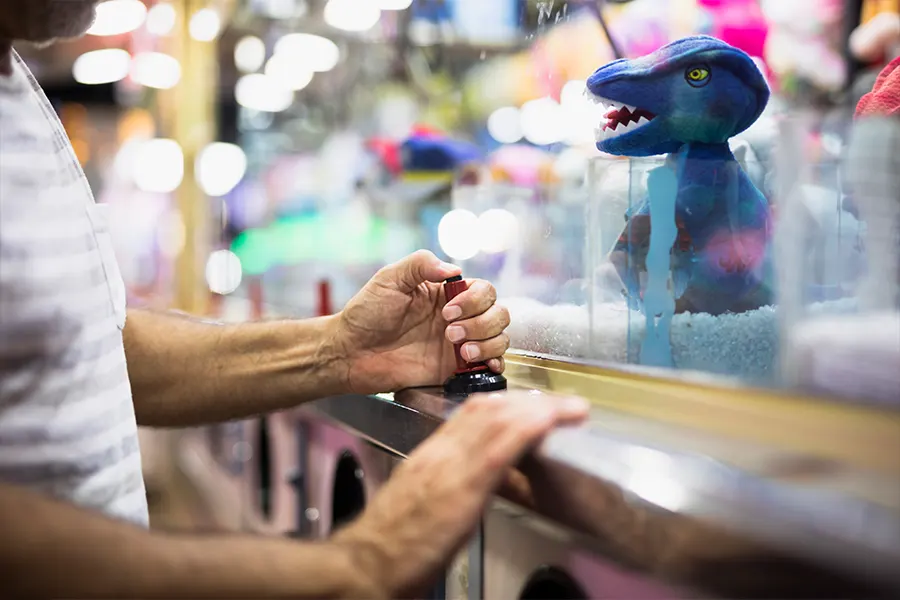
Akhirnya, faktor psikologis secara signifikan mempengaruhi persepsi pemain tentang kemungkinan ambil. Perasaan frustrasi setelah kegagalan berulang kali atau rasa iri setelah menyaksikan kesuksesan orang lain dapat memengaruhi cara pemain menilai sulitnya permainan..
Kadang-kadang, bahkan kemenangan kecil pun dapat menciptakan rasa pencapaian dan mendorong upaya lebih lanjut, membuat permainan terasa lebih bermanfaat—meskipun mekanisme mesinnya tetap tidak berubah.
Pertanyaan Umum: Pembayaran Mesin Claw Dijelaskan
🎲 Apakah kemenangan didasarkan pada keterampilan atau keberuntungan?
Keduanya. Beberapa mesin menghargai keterampilan selama siklus pembayaran, tapi di luar siklus itu, keberuntungan hampir tidak relevan – cakarnya tidak bisa digenggam dengan cukup erat.
📊 Bagaimana saya bisa meningkatkan peluang saya?
- Perhatikan pemain lain dan coba setelah serangkaian kekalahan
- Targetkan lebih ringan, hadiah yang dikemas secara longgar
- Hindari mesin dengan hadiah yang terjepit rapat atau cakar miring
⚖️ Apakah ada undang-undang yang mengatur pembayaran mesin cakar?
Di beberapa yurisdiksi, Ya. Misalnya, AS tertentu. negara bagian mewajibkan persentase pembayaran minimum atau mengamanatkan pengungkapan nilai hadiah. Namun, peraturan umumnya lemah.
Pikiran Terakhir
Singkatnya, probabilitas pembayaran mesin cakar adalah konsep multifaset yang melibatkan desain mekanis, algoritma perangkat lunak, pengaturan hadiah, teknik pemain, dan dinamika psikologis.
Ada pertanyaan lebih lanjut tentang mesin arcade atau ingin menyiapkannya untuk bisnis Anda? Hubungi kami — kami membantu operator mengoptimalkan kinerja alat berat dan kepuasan pemain.
Jika Anda ingin mengubah rasa frustrasi menjadi kesuksesan dan meraih hadiah tersebut seperti seorang profesional, lihat panduan utama kami tentang 10 Tips Memenangkan Mesin Cakar Setiap Saat!













